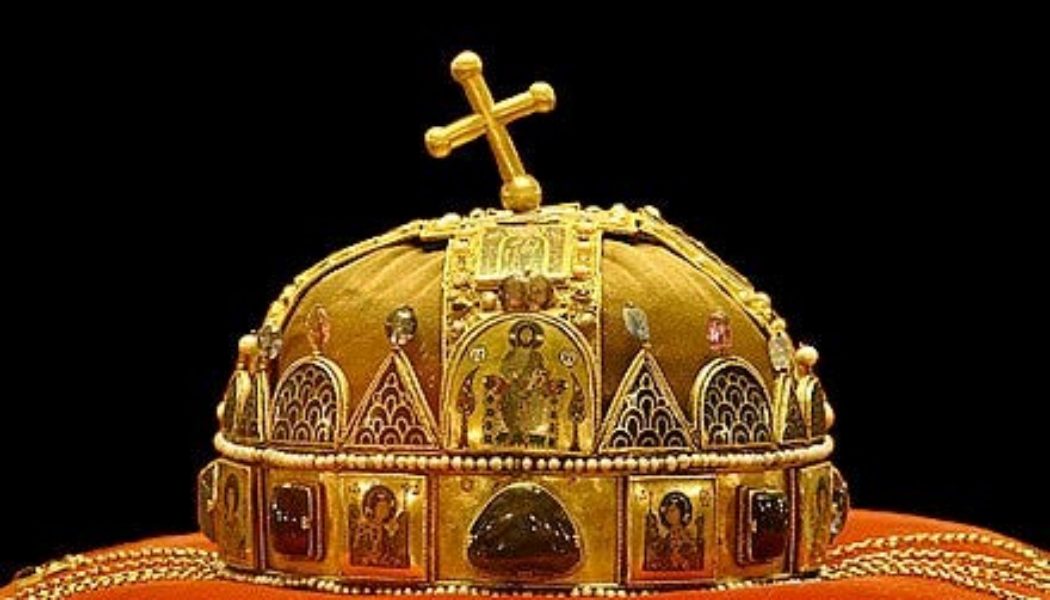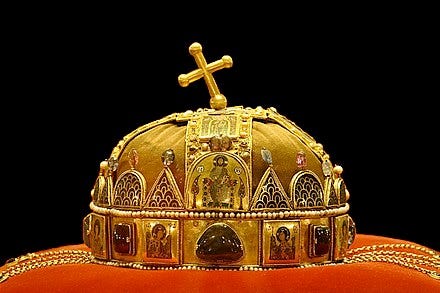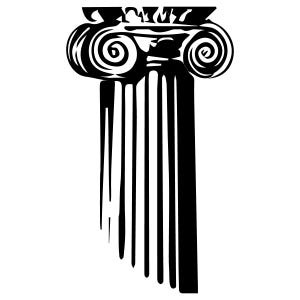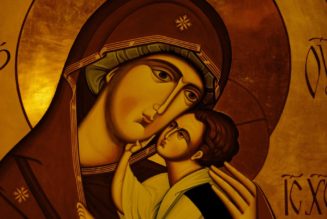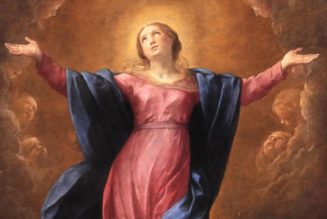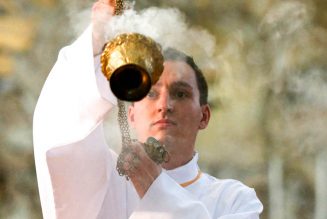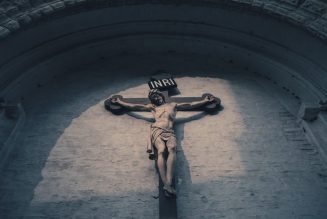Happy Friday friends,
And a happy feast of St. Stephen of Hungary.
I will be honest, my own patron included, I have always had mixed feelings about most monarchical saints.
Some notable examples to one side, for much of Western history, the messy business of running a kingdom effectively often seemed to call for the shedding of much blood for the preservation of social orders at variance with human dignity and the radical equality of the Gospel.
To be clear, I’m not some kind of ecclesiastical Commie who thinks you can’t be a saint and king, or that only those who live in hovels can get to heaven. I’m just saying, if you were a king round about the year 1000, as Stephen was, you were expected to do things like quarter your defeated enemy’s corpse and send the bits on tour to assert your authority. As Stephen did.
I find that sort of thing sits uncomfortably next to a saintly witness to Christian charity. But then again, I am edified, encouraged even, to think that such is the power of grace that even someone in that line of work can make sufficient room for the Holy Spirit to effect his salvation.
Maybe, in that sense, a king’s flaws and defects can become their own kind of warped magnifiers of his saintly qualities. They can even become reminders of our own sins and encourage us to convert.
By way of analogy, consider the Hungarian Crown of St. Stephen.
By legend, it was sent to him by the pope in about the year 1001 to mark his coronation as the first king (as opposed to grand prince) of Hungary. There’s actually no historical record of the pope sending a crown — though he did send greetings and blessings. In reality, it’s more likely to have been brought in during the reign of Béla III more than a century and a half later, at least according to the Hungarian bishops’ conference.
But the crown occupies a central place in Hungarian national identity, philosophically synonymous with national identity. It’s also unmistakable, thanks to its Byzantine style and distinctively angled cross.
I’d always assumed the wonky topper was pregnant with some deep religious symbolism about the heavy burden of kingship, since it is so faithfully replicated across Hungarian national imagery.
Imagine my surprise to learn that the crooked cross is apparently the work of a 17th century flunky, who closed a box lid on it too fast. Yet, as a Hungarian friend was explaining to me yesterday, now it does have deep symbolism for people.
It would probably have been easier to just fix the thing — though I suppose that would have involved someone owning up to breaking it in the first place — but there’s something beautiful about taking its brokenness and making it meaningful.
I like that.
Anyway, here’s the news.
The News
Five priests in New Jersey are suing the U.S. state department over changes to federal policy on visas that have caused enormous backlogs among religious workers.
They are not exaggerating. As we reported earlier this year, federal changes to the worker visa classifications have meant that while a foreign-born priest could enter the U.S. on a temporary R-1 visa and have his green card before it even expired, now he can expect to wait more than a decade — and be forced to leave the country for years at a time in the meanwhile.
This problem is already starting to hit U.S. dioceses and it’s going to get worse. The bottom line is a lot — a lot — of American parishes are going to find their pastors have to get on a plane and leave in the not-too-distant future.
This is a story you will want to follow.
—
Earlier this week, the sale of a former church in Buffalo, New York, went a little viral after some on twitter.com criticized its acquisition by a Musilm community for conversion into a mosque.
And — despite some lovely old photos of the interior being circulated online — the place had been unusable as a church for a decade before that, so badly was it in need of millions of dollars of repairs. Dollars the Diocese of Buffalo doesn’t have following bankruptcy proceedings.
Nevertheless, a few people asked us about the general appropriateness of selling a former church building to become a mosque, and what canon law says about it all. And everyone knows we can’t refuse a good canonical explainer.
—
The Pontifical Academy for Life is in the middle of another fierce round of criticism, following the publication of its “Little Lexicon on the End of Life.”
Not for the first time, the academy’s leadership is facing outrage from Catholic theologians and ethicists — including its own membership — over a text that appears to them to lack intellectual rigor and fidelity to Church teaching.
The results aren’t great.
Several sources in Rome explained to JD that the academy’s top brass, under Pillar reader Archbishop Vincenzo Paglia, seem set on diverting the academy’s expert membership into “irrelevant” meetings and talks about artificial intelligence and technology, while steering though controversial texts on actual life issues without consultation.
This is a fascinating piece, you should read the whole thing.
—
While the canonization of new saints seems to have slowed in recent years, beatification cases are continuing at a healthy — and spiritually encouraging — pace.
But, as Luke pointed out this week, the actual big event liturgies of beatification are often local affairs, and if you don’t know they are coming, you could miss them.
Choosing to care
The Nigerian bishops’ conference this week put out a letter to the country’s priests and lay faithful addressing a point of urgent national concern.
Given what we all know is going on in that country, one might assume their chosen topic was the constant violence against local Christians, or perhaps the far-from-ideal political situation in the country.
But no, in this case the bishops were moved to “righteous indignation” (as they put it) by something internal to the Church, which they called “a source of scandal and embarrassment to the Church in Nigeria.”
Perhaps, you might think there was some systematic administrative corruption or — God forbid — a new chapter had opened in the global abuse crisis? You’d be wrong again.
They singled out 12 for special mention, including “deviations from prescribed prayers and rubrics of the Mass,” “irreverent handling of the Eucharist,” “inappropriate music,” including secular songs, and the failure to wear proper vestments.
“We remind our priests that the altar is not a stage for theatrics, nor is the liturgy a venue for novelty,” the bishops said. “The Church has given us clear directives on how the liturgy is to be celebrated, and these must be followed without exception.”
“Fidelity to the laws of the Church is not optional — it is mandatory. The faithful deserve nothing less than the true and reverent celebration of the mysteries of our faith.”
The conference’s leadership closed the letter with an urgent call for all in diocesan ministry to “take immediate and decisive action to correct these abuses,” and impose canonical penalties where necessary on offending priests, “making them realize the gravity of their actions and deterring others from committing similar offenses.”
At least some who read that letter in this country will, I suspect, wonder if, given everything going on in Nigeria and being done to Nigeria Christians, the bishops hadn’t anything more important to worry about than bad music at Mass and Father ad-libbing around the liturgical texts.
Apparently, Nigeria’s bishops do not think so. And I would say they are dead right.
The faith of Christians and their witness in daily life finds its source and summit in the Eucharist, as Vatican Council II noted. Where the source is muddied and mishandled, it seems reasonable to me, you can expect it to flow inevitably downstream into everything else.
I’d say also that if Nigeria is blessed with bishops minded to make right worship such an urgent national point of reflection and action, that probably says a lot about how the faith is held and handed on there, too.
And the results are pretty apparent: Mass attendance in Nigeria is at levels the U.S. probably hasn’t seen since people were driving Ford Model-Ts to church, and the people witness to their faith in the face of violence Americans only let ourselves imagine in adolescent political rhetoric or as box office entertainment.
Nigeria also had one of the world’s highest participation rates in the global synod on synodality, by the way, nudging above 20% of Catholics in some dioceses, compared to U.S. dioceses that struggled to crack 2 percent. And they weren’t arguing about felt banners and party politics — they were soberly discussing how the promise of the Gospel can overcome generational tribal blood feuds.
Reading the list of liturgical abuses, I was of course struck by how many of them I could find on a Sunday in an American parish somewhere, in just about any diocese I can think of, without too much effort at all.
But if the USCCB leadership put out a letter like this, they would be held out for open ridicule by entire sections of the Catholic media, and sneered at by a sizable contingent of their own bishops, I’d wager.
I’d also bet some of the first words you’d hear in response would be “anti-Francis,” despite the pope’s own repeated criticism of many of these same abuses.
And here, too, we see the sorts of ordinary spiritual malaise we might rightly think could be helped by cleansing the sacramental wellspring of our faith — parishes divided by politics, declining vocations, low rates of baptism and marriage among Catholics, open dissent from Church teaching, and so on.
So, while I imagine some might struggle to understand why — given everything else going on for Christians there — Nigeria’s bishops have chosen to care about how Mass is celebrated, I would say the reasons are self-evident.
Lex orandi, lex credendi.
Just briefly, you may or may not have noticed that there is no sponsor for this newsletter. That happens a fair bit throughout the year.
The thing is, only a small number of organizations have the perception and savvy to see what you know from reading these dispatches every Tuesday and Friday: That there is something different about The Pillar, maybe even a little weird — but in a good way.
We cover the news differently here, and we cover it that way for you, our readers, who sign up in the tens of thousands to get these Pillar Posts every week because you get what we’re doing and like what you see.
Thank you for that.
But the only way we can stay relaxed about the fickleness of ad buys for these newsletters is if a small, heroically tiny really, percentage of our ever growing free readers choose to become paying subscribers.
So while you’re reading this, I’d ask you to ask yourself: Isn’t this worth it? Don’t the laborers deserve their wages?
Go on, you know you should.
Being two
I consider myself a fairly laid back father when it comes to our daughter’s development. She’s clearly a smart enough kid, and I’m content to let her go at her own speed.
But I accept there’s a moment’s passing frustration when other adults ask her basic questions and she gives them a blank look, especially when I know she understands and could respond — if she wanted to. So, for reasons of parental pride, we’ve been trying to work on the low -hanging fruit lately, coaxing her to confirm at least the childhood equivalent of name, rank, and serial number.
We’ve made some superficial progress in getting her to give her age. She will, if closely interrogated, confirm she is “two,” and deny any other age you might put to her. But I feel like this is a cheap victory, really.
I mean, OK, she can count with total competence to… I don’t know, 20 at least. And she grasps the concept of “two” as a quantity. But she cannot possibly understand what it means to “be” two — and I can see this in her eyes when you ask her about it.
And really, I don’t know how to imbrue the concept with meaning, at this point. I mean, she can’t count to 40, let alone past it — so trying to communicate “being two” as relative to my age is pointless.
Nor does she remember her first birthday, so her age relative to herself also doesn’t mean anything, either.
But, really, what does it mean for me to “be” fortysomething? Is my sense of my age any more profound and less nonsensical?
We think of marking our age as an exercise in measuring time — our progress through a linear “fourth dimension” which, though I have read “A Brief History of Time” more than once, seems to me to be pretty nebulous to our greatest minds.
But our working measurement of time isn’t really a measurement of a fourth dimension at all, when you think about it. What we measure is relative space in 3D. A day is the turning of the Earth on its axis. A month is the (now approximated) movement of the moon around us, and a year is our loop around the sun.
We think of these spatial cycles as exactly repeating, we come back to where we were every sunrise, full moon, and new year.
This is the framework of our existential order, and so we measure it obsessively — earlier this year, IWC came out with a watch that can, with no manual adjustments, calculate the time and calendar, complete with leap years and lunar cycles, for 45 million years.
Of course, as amazing as this is, we never actually occupy the same point of space twice. Our solar system is wheeling around the galactic center, while the entire Milky Way hurtles through the void at a rate and trajectory we can barely conceptualize, let alone measure meaningfully. But the basic truth is we are forever moving, always somewhere we’ve never been before, never going back.
We console ourselves with a false sense of time as a repeating cycle of seasons, always returning to where we have been before, and marking the false occasions as little acts of self-deception and consolation to shield us from the madness of sprawling infinity.
Where is this Aug. 16 in space and time? The truth is, adrift in an infinite universe and time unending, we have no real answer. Except we do.
To bring any sense of order to endless space and time, and any meaning to our seasons’ cycle, we need a fixed point — an existential anchor — to which we affix ourselves and everything happening around us. The moment where eternity touches the finite is the ground zero of history, giving ultimate meaning to what came before and will come after.
Spatially, the same is true. Where you are on a journey only matters if you have a fixed point of departure, even if your ultimate destination is unknown.
For the whole of creation, this point is the Incarnation. Where we are in time we mark in years before and after Christ’s coming. The seasonal spiral, so many winters and Christmases, springs and Easters, means something only if we understand each one is actually new, progressing from a moment and place and towards something.
As this relates to my daughter, it’s all fine and dandy to get her to say “I am two,” but my job is to help understand what “being two” marks out where she entered the history of salvation, where her life exists relative to Christ’s mission.
To understand that is to understand that she, I, we, were created with intent. As Benedict XVI put it: “Each of us is the result of a thought of God. Each of us is willed. Each of us is loved. Each of us is necessary.”
For her, to really be two is to live the fullness of the reality that she was willed into creation at and for a moment — that she is loved and necessary, here and now. I wish I could teach her that as easily as I could teach her to read a watch.
See you next week.
Ed. Condon
Editor
The Pillar
Comments 41
Services Marketplace – Listings, Bookings & Reviews
